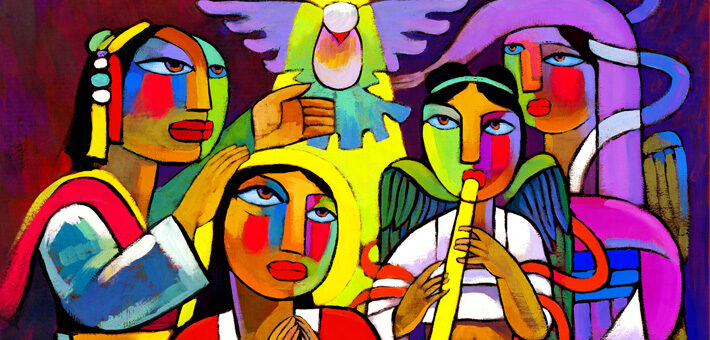Commentary on Isaiah 42:1-9
God’s spirit, God’s servant, God’s delight.
These concepts are the connective tissue between today’s Old Testament lesson from Isaiah 42 and the assigned Gospel lesson from Matthew 3. The passages echo one another.
In Isaiah 42, the divine speaker announces the presence of a servant who is chosen by God and a source of delight for God. God will place God’s spirit upon this servant so that the servant is able to bring forth justice to the nations, to be a light, to open blind eyes and bring out prisoners. In Matthew 3, when Jesus is baptized, God’s spirit likewise descends upon him and God delights in him. The relationship here is not between God and God’s servant, but between God and God’s beloved son: “This is my son, the Beloved, with whom I am well pleased” (NRSV).
Both of these passages provide an opportunity to talk about the role of these individuals as God’s earthly representatives, as God’s chosen ones, as workers of justice in the world. What is their mission and role? Why are they divinely chosen? Why do they need the spirit of God? And is this a role for individuals and/or communities?
And how might we, as God’s people today, fashion our actions and demeanors into ones fitting for us as servants of God, ones in whom God delights? Are we God’s servants, establishing justice on earth as it is in heaven?
How do we take up the mission of the servant and live out our baptismal vows?
To answer some of these questions, let’s focus more on this servant figure in Isaiah 42.
The servant of Second Isaiah (Isaiah 40-55) is spoken of in four different passages — Isaiah 42:1-4; 49:1-6; 50:4-9; 52:13-53:12. Scholars typically extract these four passages from their surrounding literary contexts in order to interpret them with reference to each other; yet, these “servant songs” — actually the passages are poetic as is the surrounding Isaiah material — are part of an exilic prophetic announcement about the near future. So, they are best read within the confines of Second Isaiah’s overall message as presented in the middle section of the prophetic book of Isaiah.
The kingdom of Judah finds itself in exile with the temple in ruins and kingship at an end. Zion in all its splendor has been diminished, and some of the Judahites are forced exiles in the foreign land of Babylonia. Without a temple and a Davidic leader, the future of the people is greatly in peril. They need assurance, assistance, and a new vision.
Into this difficult political and religious situation, the prophet of Isaiah 42 introduces a servant figure. Interpreters spend much of their energy debating the precise identity of the servant. Is it the prophet himself? Or a ruler whether foreign such as Cyrus or native such as a Davidic kingly figure? The later Christian tradition of course develops the identity of the servant Christologically. The exact historical referent for the servant is perhaps tangential to the passage’s principal concerns.
One fundamental and fruitful tension in the biblical text centers on whether the figure represents an individual or a community, the servant as a historical person or all of Israel. Personal or communal. The figure is spoken of in individual terms obviously but this fact does not preclude a collective interpretation. In fact, Isaiah 49:3 explicitly names the servant as Israel: “And [God] said to me, “You are my servant, Israel, in whom I will be glorified” (NRSV).
Christians have typically seen the servant in individual terms and associated clearly with Jesus — his life and ministry, but especially his death and resurrection. Jews have understandably gravitated toward the communal interpretation and viewed Israel as called to be a servant to the world, a light to other people.
We might venture the same sort of communal/individual tension within the interpretation of the baptism of Jesus in Matthew 3. On one (historical and literary) level, Matthew is clearly presenting a narrative about an individual. Jesus is baptized. He is the Beloved, God’s son, the one in whom God is well pleased. On another (theological) level, Christian readers are invited to see themselves in this baptism experience, to see the Christian community as baptized like Jesus into faith, into the beloved community. We are together the daughters and sons of God. God is well pleased with us.
When we hold the tension between communal and individual readings of Isaiah 42 and Matthew 3, our response to these readings become clearer. We have individual models of servanthood as examples. Second Isaiah’s servant and Jesus point us toward our important work. They demonstrate that relationship with God is possible. They lay out the types of ministry possible when we are led my God’s spirit. But we — as a community — also participate in this work of justice together as communities of faith. As churches, not just as individuals, we are God’s servants to the world. We participate in God’s new thing (Isaiah 42:9), God’s new exodus out of exile and brokenness. God’s community is God’s servant.


January 8, 2017